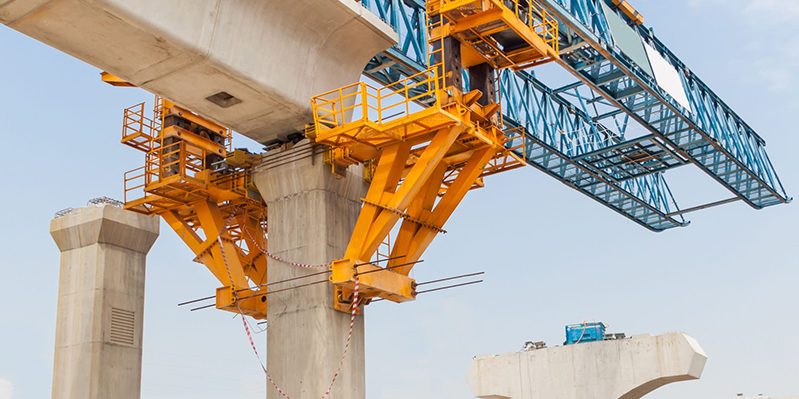Construction is an inherently dangerous industry, and much of this risk stems from the use – or improper use – of machinery and equipment. The phrase “struck-by accident” refers to any situation where a construction worker is injured as a result of being struck by materials, machinery, or equipment. Information collected by the BLS and analyzed by OSHA has determined that struck-by accidents are the leading cause of injury and fatality on construction sites. In 2015, 66 workers were killed when they were struck by a vehicle on site and 96 people died as a result of being struck by an object or piece of mobile heavy equipment including backhoes/excavators, mobile cranes, road grading and surfacing machinery, loaders, bulldozers and tractors. Unfortunately, between 2010 and 2015, “struck-by” injuries rose nearly 34%.
In addition to struck-by accidents, the other leading causes of equipment-related injuries and fatalities include equipment rolling over and injury to the operator; operators or mechanics being run over or caught in equipment when the brakes aren’t set, equipment is left in gear, wheel chocks are not used, or equipment and controls aren’t locked out; and workers on the ground being hit by falling equipment loads, backhoe buckets, or other moving parts.
In the drive towards zero incidents and continuous improvement, awareness and education are power. When it comes to machinery and equipment, understanding the risks and establishing key controls and work practices is the first step towards effective management.
How to Mitigate Risks
Keeping workers safe starts with an understanding of how machinery and equipment works, what training and certification is required, and what risks the equipment presents to operators, other workers, and the site. The tips will help mitigate risks and prevent unnecessary mistakes or incidents at your worksite:
- Make sure operators are properly trained. It is essential that every operator or driver is thoroughly and properly trained on the equipment they will use. Organizations such as the NCCCO, or National Commission for the Certification of Crane Operators, and technical or vocational schools across the nation offer operator training and certification. Whichever program workers select, make sure that operators and mechanics are training by qualified persons with specific experience with that particular model of heavy equipment. Having effective, interactive, readily available training programs is essential to making sure there is a robust pipeline of skilled equipment operators ready to meet construction demand. Regardless of the course, operators receive both classroom (“theoretical”) and hands-on (“practical”) training and must demonstrate their knowledge via written exams and field testing.
It’s also important for workers and contractors to stay on top of changing regulations and guidelines and to keep certifications up-to-date. Digitally documenting each worker’s certification information – whether it’s OSHA-10 or crane operation certification – will help ensure compliance and manage re-certification processes.
- Stay vigilant. There are so many moving parts on site that constant vigilance and communication is key. Train your employees to survey their surroundings at all time whether they’re behind the wheel of a machine or not. Operators should check vehicles at the beginning of every shift to ensure that the parts, equipment, and accessories are in safe, working order. Every worker on site should, of course, follow OSHA standards, including correct PPE (helmets, safety glass, high visibility clothing, steel-toe boots, safety boots, etc.)
Trained workers should not operate vehicles in reverse with an obstructed view, and whenever possible, they should use machinery that has reverse signal alarms capable of being heard above the competing noises on site. In addition, each piece of equipment should have appropriate roll-over protection and protection from falling debris hazards on site as needed. Vehicles carrying workers should have an adequate number of seats and seat belts – the same standards for operating a car on the highway and an excavator on site apply and then some. Similar to driving a car, it is important to constantly scan from left to right, above and below, and in front and behind for unexpected hazards or situations that require immediate response.
With communication and a relentless commitment to assessing and identifying potential hazards, you improve your chances of a safer site.
- Make sure equipment is secure. Equipment and machinery looming high above a worksite – and above busy streets or walkways – presents a great risk. Make sure every worker knows the best practices for securing equipment, and practice a “zero tolerance” policy when it comes to workers cutting corners, failing to secure equipment – even if they’re just running to the bathroom – or workers saving time by walking under equipment that is not in use. Employees must take care to not overload vehicles and to ensure that loads are balanced and fully contained within the vehicle. In addition loads must be covered and secured before moving the vehicle. And don’t forget about equipment on the ground, particularly smaller machines and power tools; over 1,500 injuries were reported in 2015 as a result of workers stepping on unsecured equipment.
How Technology Can Help
The good news is that technology is available today to improve jobsite visibility, including where site equipment and machinery is located and how it’s being operated, and to monitor/respond to potential hazards on site – automatically and in real-time.
- Autonomous equipment is finding its way onto sites. Companies are exploring the use and potential of autonomous, computer-powered equipment that does not require a driver. A start-up out of California, for example, has developed a driverless track loader, which works 24 hours a day to dig post holes and is programmed with automatic safety features, such as braking when it detects an obstacle ahead. In the case of autonomous vehicles, the feasibility and scalability of driverless equipment still needs to be thoroughly tested, but these vehicles err on the side of “better safe than sorry” (i.e. braking when an obstacle is detected, even if its moving and will not cause an incident), which helps mitigate risks.
- Know who is operating your equipment and if they’re certified to do so. The Spot-r EquipTag, which adheres to any piece of equipment on site, detects when tagged machinery is in use, and layers in Spot-r Clip workforce information to determine whether or not the operator is certified. The system sends automatic alerts to crew leaders when an unauthorized or unknown operator is operating – or in the proximity of – tagged equipment. The Spot-r Clip’s push button also enables crew members to report hazards from wherever they are located – without having to leave the vehicle to find help. If a worker sees a piece of equipment that isn’t properly secured and could cause an injury, for example, simply pushing the button at the bottom of the wearable device triggers a notification to designated supervisors, who can respond accordingly.
- Proximity sensors can protect crew working near equipment. Oftentimes, workers assume that because they can fully see a vehicle that means the equipment operator can fully see them as well – a dangerous assumption when you consider that every machine has blind sports. With proximity sensors, both the machine operator and nearby crew members can be alerted to each other’s presence via a series of alarms/notifications/vibrations. Proximity-warning and collision-avoidance systems help operators know that ground workers are in dangerous proximity, or that another vehicle is dangerously close, making job sites a lot safer.
Increasingly, IoT solutions that connect the jobsite and collect real-time field data on site resources, including machinery and equipment, are helping contractors stay ahead of potential dangers. When teams know where equipment is located, who is operating it, and utilize sensor-based technologies to monitor and alert for potential incidents, risk exposure decreases and overall site safety improves.
Experience the Future of Construction Safety with Triax Technologies
Ready to take the next step in improving safety and mitigating risks on your construction site? Request a demo or contact Triax today to see how our innovative technology solutions can revolutionize your operations.

